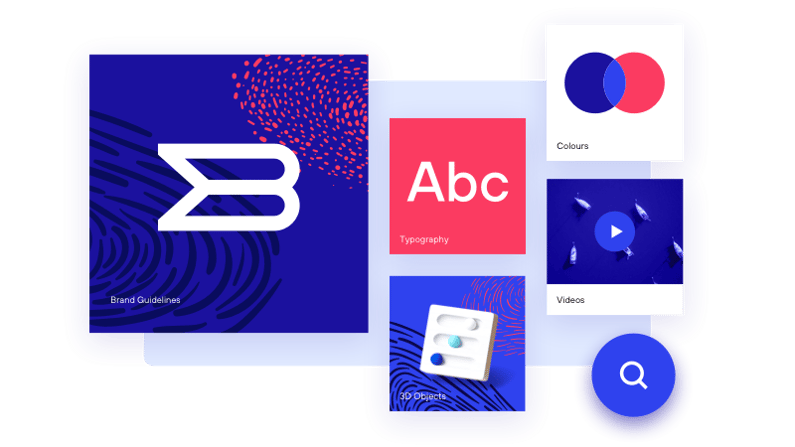Digital asset or brand asset?
It’s easy to mix the two. Digital assets are any digital file or document a company owns regardless of who created it or what purpose it serves. Brand assets however, are directly related to the brand and marketing. Whereas a digital asset excludes nothing, a brand asset excludes everything but the brand.
And with that out of the way…
Physical brand assets establish brand recognition
Colors, typeface, logo, slogan, packaging, illustrations, patterns, icons and more including the actual company name, are all elements that defines the look of your brand. Designed to distinguish your brand from everyone else with the purpose of establishing successful brand recognition, creating a competitive advantage.
Examples of brands that have successfully achieved brand recognition with brand assets are Dunkin Donuts with their pink and orange letters, or McDonald’s yellow arch. These are perfect examples of how colors are powerful brand assets. For Adidas, it’s their distinctive shoe patterns, and let’s not forget the famous apple icon by Apple. These brands have spent years building their brand consistently, creating that unique identity that makes people instantly think of their brand when they see the physical brand elements, both in and out of context.
 Non-physical brand assets establish emotional brand connections
Non-physical brand assets establish emotional brand connections
There is more to a brand than what you can see and touch. How your brand is communicated through the voice of your employees is just as important as the physical parts of your brand. Every day, employees are in contact with external stakeholders, whether it is potential or existing customers, vendors or investors. How your employees represent your company and your brand shapes the stakeholder’s interactions and can mean the difference between a long-term relationship or a non-existing one.
Rules of engagement, code of conducts and social media rules are brand elements without a physical form, yet crucial for your brand identity. It is essential that how to communicate is controlled and established across your entire company to ensure unified and consistent brand building.
Also read: This is internal employee branding and how you get started
Brand assets creates brand value
The purpose of brand assets is as stated earlier to define and create the uniqueness that puts you in front of your competitors and helps you become the preferred brand. Your brand’s value will be the reflection of how successful you are at establishing this competitive advantage.
Also read: How do you measure brand value?
Manage your brand assets
Knowing how important brand assets are to a brand, how you manage them can mean the difference between success or failure when it comes to establishing brand recognition
- Make sure your assets are available: If you want colleagues to use the correct assets, you need to make sure they are easy to find. Establish a single location where everything is searchable.
- Make sure your brand assets are understandable: Don’t expect everyone else to understand your brand like you do. Asking colleagues to read pages of information on how to use the brand before getting hold of the brand assets is not realistic. Instead, make your brand rules are bullet proof with the help of digital brand guidelines.
- Make sure your assets are usable: It’s not uncommon that brand assets need adjustments before use. By transforming your assets into digital templates, you allow your colleagues to be self-sufficient. There is no need to involve a bunch of people and they can quickly get hold of the assets they need.
Curios to learn more about how you can manage your brand assets? Download our free whitepapaer for more valuable insight
